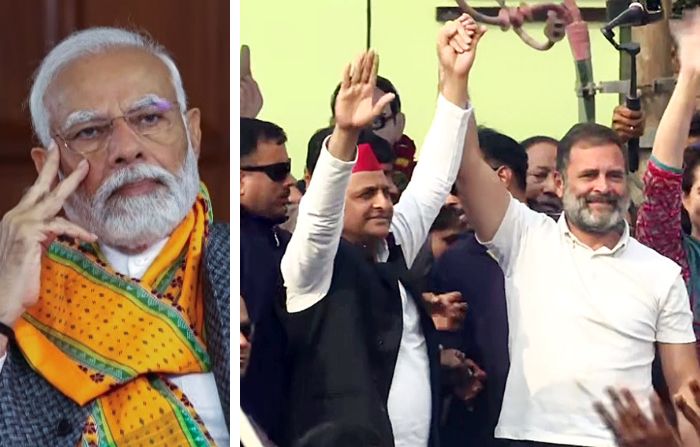- Thursday, April 24, 2025
The opposition alliance of the Indian National Congress and Samajwadi Party was leading the BJP-NDA in 43 seats while the latter was ahead in 36 in the state that sends 80 MPs to New Delhi.

By: Shubham Ghosh
THE northern Indian state of Uttar Pradesh is always a prized catch in the country’s general elections. Since the most populous state sends 80 members to the Lok Sabha or the popularly elected parliament, all parties and their alliances hope to gain the most from there in a bid to form the government in New Delhi.
In the 2014 and 2019 general elections, the Bharatiya Janata Party (BJP) of prime minister Narendra Modi made massive gains in the state which helped it to get a majority on its own. Even in the state elections in 2017 and 2022, it swept the state under the leadership of chief minister Yogi Adityanath, who is often seen as the next big thing in the BJP after Modi.
But June 4 has changed all those equations.
Hours into the counting of votes for the general elections, the BJP seemingly failed to replicate the magical effect in the state and was put under a serious challenge by the Indian National Developmental Inclusive Alliance (INDIA) which includes among others, the Indian National Congress and the Samajwadi Party (SP), a major player in the state.
Read: What a reduced majority could mean for Modi’s BJP?
The two parties were leading in 43 seats in Uttar Pradesh together as against 36 in which the National Democratic Alliance of the BJP was leading. Rashtriya Lok Dal, a member of the NDA, was leading in two seats alongside the BJP in 34.
In the 2014 and 2019 elections, the BJP won 71 and 62 seats in the state respectively, and the exit polls published three days ahead of the election results this year also predicted the trend repeating. But the real picture turned out to be something else and with several more rounds of counting still left, the picture could change even more.
What would be shocking for the BJP’s supporters is that PM Modi inaugurated the Ram temple in Ayodhya in the state, fulfilling an age-old poll promise and many thought it would give the Hindu nationalist party massive electoral dividends. But according to the latest data released by the Election Commission of India, the BJP’s candidate and sitting MP Lallu Singh was trailing behind the SP’s Awadesh Kumar by a little over 3,000 votes. The BJP was not leading in much of the bordering constituencies either where the Congress and SP made significant inroads, as per early trends.
Read: Modi’s BJP, NDA take early leads as results emerge
It was also a massive comeback by the Congress’s Rahul Gandhi and the SP’s Akhilesh Yadav, both of whom are contesting this year’s election. The duo had joined hands during the state elections in Uttar Pradesh in 2017 but failed miserably as the BJP swept the polls. Seven years later, they came together again and delivered a different result, withstanding ridicule from none other prime minister Modi who called them ‘do shehzade’ (two princes).
The Bahujan Samaj Party, another major player in Uttar Pradesh, seemed to go the 2014 way when it won zero seats in the state. According to the commission data, the party led by former chief minister Mayawati was not leading even in a single seat this time, which is a major disappointment for a party which won 10 seats in 2019.